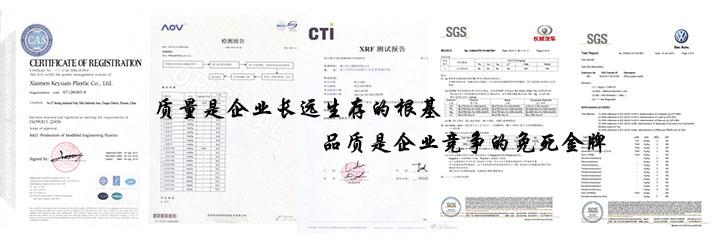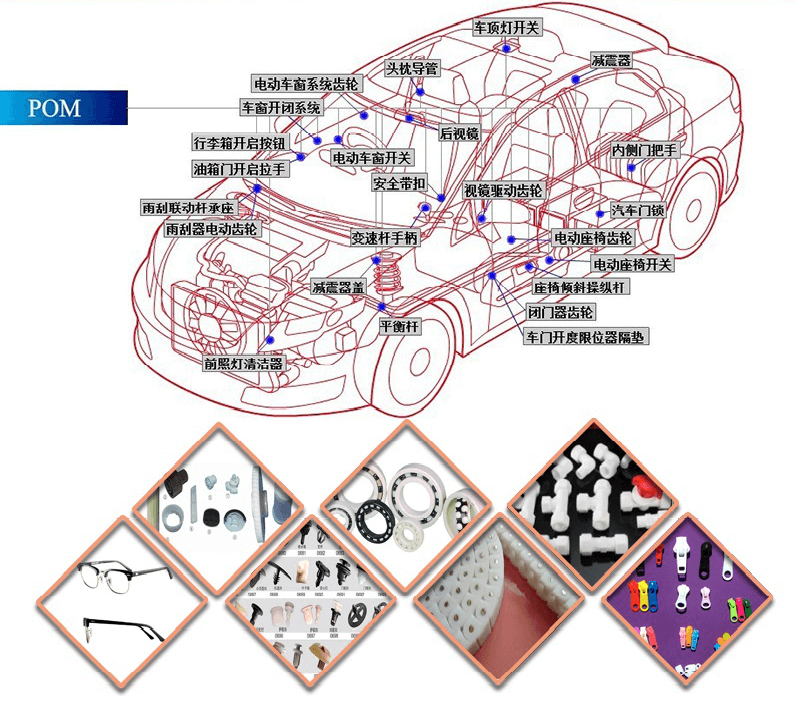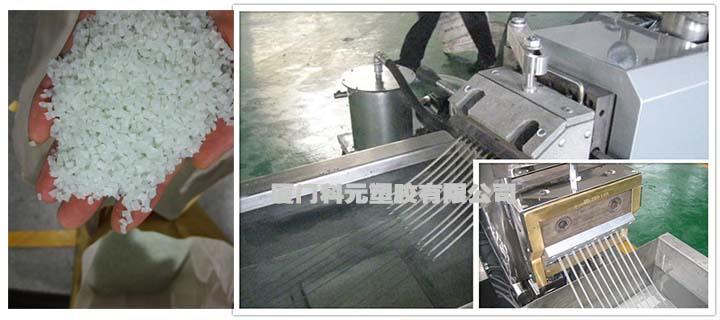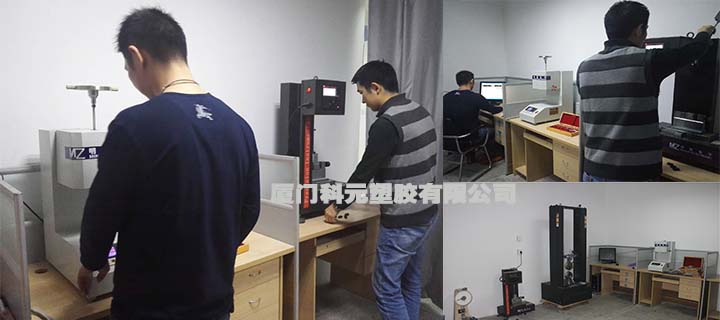Company's products
You are here: Home > Company's products > POM plasticPom carbon grade

Product Details
POM Carbon Fiber Grade POM
Product Description Product Description | Carbon Fiber Grade POM |
Product grade | Injection Molding Grade |
Product appearance | Character / black / other colors / particles |

Carbon Fiber Reinforced POM Introduction:
Are used internationally renowned brands: the United States DuPont POM; Korea Cologne POM; Japan Polyplastics POM; Japan's Mitsubishi POM; Japan Asahi Kasei POM; Germany BASF POM; Nantong Baotai Ling POM; South Korea Engineering POM; Yuntianhua POM plastic and other raw materials to change Pom, resistant pom, resistant pom, resistant to pom, resistant to pom, resistant to high (low) temperature pom, heat pom, resistant pom, , High viscosity POM, high toughness POM, high stiffness pom, high hardness pom, glass reinforced pom low warpage pom low latent pom fatigue resistance pom creep pom high flow pom thermal stability pom anti-static pom flexibility pom and so on. ..
The carbon fiber reinforced POM - POM process machine is started in a common manner suitable for use in thermoplastics. Set the cartridge and nozzle heater to a melting temperature of 180 ° C to 220 ° C. After that, the optimum machining conditions must be determined in the test machine. When the work interval is relatively long or the machine is shut down, the machine should be run until it is empty and the barrel temperature is reduced. When restarting the machine, it is first necessary to ensure that the mold is heated to about 200 ° C. This measures prevent the barrel from being blocked by cold material. In general: the initial packaging of plastic particles generally do not need special processing can be directly processed. However, damp particles or pellets due to expired or improper storage should be dried at about 100 ° C to 110 ° C for about 3 hours using a suitable dryer (eg dehumidifying dryer). Scrubbing waste composed of slag, waste and the like can be recovered by backwashing. However, these backstage must ensure that the previous processing is not contaminated or damaged, the grinding process will also damage the plastic. The low-speed running mill is suitable for grinding operations; any attached dust should be removed. Before re-processing, it is recommended to dry the already long-term storage of the friction material. In practice, 10-15% of the abrasive material (occasionally 30%) will be mixed. If the POM is a glass fiber reinforced product, the glass fiber can be shortened during shearing and grinding. If a large amount of such abrasive material is incorporated into the new material, shrinkage, warpage and mechanical properties may be affected.

Carbon fiber reinforced POM - injection molding is the most important method of processing POM. Can be processed on all commercial molding machines as long as the plasticizer is designed correctly. Commonly used single-threaded three-stage screw for POM injection molding, in modern machines, the effective length of the screw 20-23 D, spacing 0.8-1.0 D. The three-stage screw has been tried several times with the geometric dimensions of the test, essentially depending on the temperature control on the barrel and the depth of the screw thread. For different diameter of the screw, the recommended thread depth When using a slightly threaded screw, the plasticizing power is lower than the standard screw power. The treated material is less than the deep thread screw. However, the melting of the barrel is more gentle, shorter residence time, and the melt is more uniform. This makes the molded parts made of POM have the advantage of quality. Open injection nozzles are usually sufficient for injection molding of materials. In addition to their simple design to ensure smooth flow, these nozzles have the advantage that the gaseous decomposition products due to thermal damage are discharged without increasing the pressure The This phenomenon occurs when the residence time is unexpectedly prolonged and the melting temperature is high during parking or other interruption. The stop nozzle prevents the melt from flowing out during the plasticizing process and when the nozzle exits from the mold. Spring-pressurized needle-shaped stop nozzles are particularly suitable for this purpose. To achieve optimum production, the screw should also be equipped with a check valve to prevent the melt from flowing back onto the screw thread during injection and maintenance of the pressure stage.

Carbon Fiber Reinforced POM - When processing glass fiber reinforced POM, use wear-resistant plasticizing devices such as bimetallic barrels and reinforced screws, screw tips and check valves. The column mold can use all known types of nozzles, including front and hot runner systems. For the thermoplastic material made of injection molded parts of the nozzle and the mold associated with the structure of the guide, the runner system and outlet can not be too small. Due to the low melt viscosity of the POM, the surface profile can be repeated very accurately. Therefore, the inner surface of the mold must be perfectly machined. This is also true for mold styling surfaces. The parting line can not cause flash molding, but it must be ensured that the mold has sufficient exhaust time. It is important that the cooling water loop and the cavity maintain a good seal, otherwise the incoming water may produce a corrosion mold solution, and the metal inserts of the POM product may be packaged without any problems. But before inserting the mold, must be preheated to 80 ℃ -120 ℃, so as to avoid causing internal stress. Metal parts should be free of grease and with knurled or open slots or the like to ensure good fixation. Make sure that the metal edges are streamlined. Considering the thoughtful effective temperature control system is particularly important because the mold temperature has an important effect on the surface finish, shrinkage, warpage and error of the model article. The temperature control design should ensure that all molded parts of the mold temperature are the same.
Carbon fiber reinforced POM - POM molding in the choice of temperature adjustment should make all the formation of the same temperature. In special cases, it may sometimes be necessary to systematically select different temperatures. For example, in the mold half of the plan to choose a different temperature, can be a certain degree of impact on the warpage of the model products. Only in a separate loop system can achieve this - point. For all partially crystallized thermoplastic plastics, the mechanical properties of the injection molding are in part dependent on the crystallinity, as is the case with the POM. Mold temperature increases, crystallinity increases. As the mold temperature increases, hardness, stiffness and strength are also increased. Toughness is exactly the opposite. - In general, the temperature regulation is sufficient in the range of 60 ° C to 90 ° C. Precise parts require mold temperatures between 90 ° C and 120 ° C. If the required dimensional stability is particularly high, the set temperature of the mold temperature is maintained at least with the temperature used in the future model product. To avoid heat loss, it is recommended to keep the mold between the mold and the platen. - it is sufficient to keep the POM melt between 180 ° C and 220 ° C. In some cases, the long process, the wall of the composite mold may need the temperature up to 230 ℃. Processing temperature and then high, it will produce the risk of thermal degradation. If the conditions permit a high-speed injection, the residence time of the melt in the injection cylinder is short, preventing thermal degradation.

Instructions: COA, SMDS, SGS, COC, UL yellow card and physical form and processing parameters and 17% VAT invoice.




